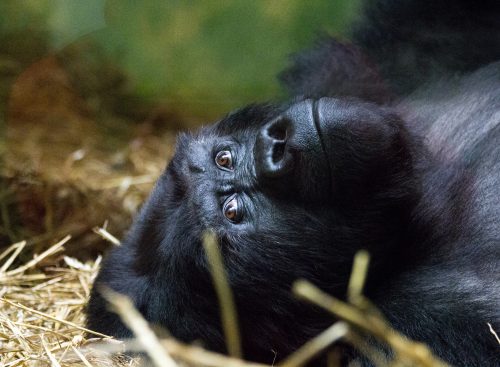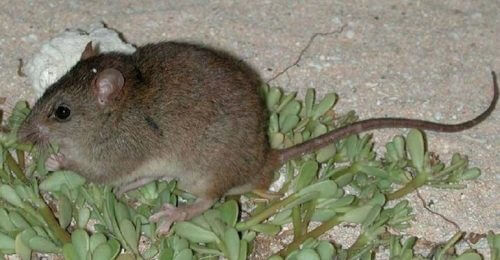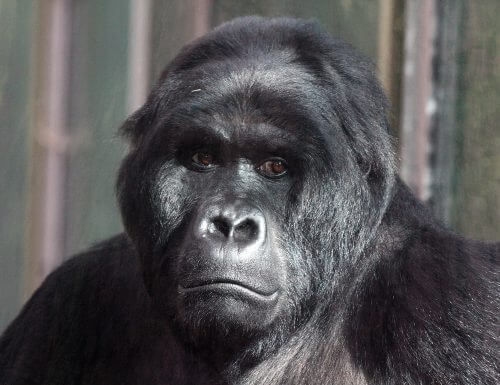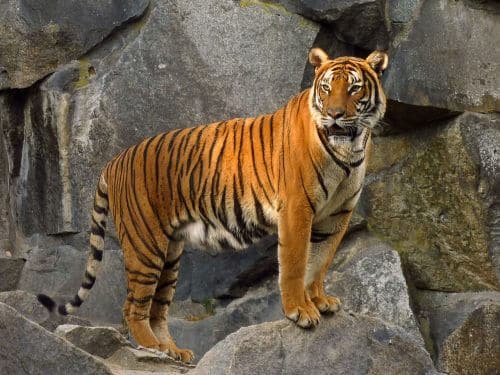The tigers have disappeared from Cambodia, the lowland gorilla is on the verge of extinction in Africa, an Australian rodent has disappeared from the face of the earth in Australia. Human actions are accelerating the mass extinction of animals and plants on Earth. Can this deadly process be stopped?

By Dr. Daniel Mader, Zivata - Science and Environment News Agency
Five mass extinction events have occurred in Earth's history. The most famous, although not the biggest and most severe, is the mass extinction event of the dinosaurs about 65 million years ago. These mass extinction events occurred due to catastrophes such as increased volcanic activity that released huge amounts of toxic gases into the atmosphere, or giant asteroid impacts. Today, researchers show evidence that the world is already at the beginning of The sixth mass extinction event. Studies have found that the extinction rate of vertebrates (animals such as fish, mammals, reptiles) in the last century is 8-100 times higher (depending on the animal family - mammals, fish, reptiles, amphibians) than the moderate extinction rate in the periods between the mass extinction events. This rate is on a constant and rapid upward trend.
Want to guess what is the main reason for the current extinction event? The unfortunate answer is that man is responsible for this, starting with the destruction of habitats for agriculture and building infrastructure, through hunting, pollution, and climate change. The forecast for the future is even bleaker: with increasing climate change, acidification of the oceans, increasing pollution, increasing destruction of habitats and increasing hunting and fishing, it is expected that the rate of extinction will accelerate. Another study It is predicted that one in six species will become extinct by the year 21000.
The first victim of climate change

This summer, for the first time, it was announced on Extinction of a mammal due to climate change. This is a tiny rodent called Bramble Cay melomys, which lived until recently only on one tiny island in Australia. The researchers concluded that due to the rise of the sea level in the last hundred years, the tiny island experienced frequent and severe flooding events, which killed the animals on the island and harmed the vegetation and their habitats. Within a decade, the island's vegetation cover was reduced by 97 percent. The tiny rodent didn't stand a chance.
Coincidentally, or not coincidentally, this announcement came In the hottest summer ever measured on Earth, since the measurements started. Last August was too hottest ever measured, making it the 16th month in a row that the average monthly temperature has been broken. Such a long streak of breaking average temperature records has never been measured.
Which species are in particular danger? Mainly species that live in relatively small areas, with limited migration capacity - for example species that live on islands. One such species is the opossum of a species lemuroid ringtail possum, which can die within hours when exposed to a temperature higher than 30 degrees Celsius. Another endangered species is the beautiful Haleakalā silversword plant, which grows on the summit of a solitary volcano in Hawaii, and which today Having trouble growing sprouts (new plants), due to increased heat and dryness, and the fact that he has nowhere to wander.

Report of the World Wildlife Conservation Society (WCS), in collaboration with other research institutes from around the world, shows that the global population of the Eastern lowland gorilla subspecies (Gorilla beringei geruari, Grauer's gorilla) - the largest primate in the world - has moved from a state of endangered to critically endangered.
Since 1995, the population of gorillas (which apparently only live in the Democratic Republic of the Congo in Central Africa) has decreased from 17 individuals to 3,800 individuals - that is, almost 80 percent in about twenty years.
The main reasons that caused the deterioration of the situation are the destruction of habitats in favor of creating agricultural areas and hunting, but the main catalyst for this wretched situation is the civil war that raged in the country in the years 2003-1996. During this period, various rival militias established tiny mines in the east of the country to obtain funds to finance the fighting. The militias fed the miners and their men poached meat from wild animals, including gorillas. Even after the end of the civil war, the area remained lawless and the residents who were severely affected by the fighting, turn to hunting wild animals as a source of food, trade in exotic wild animals and clear forests to create new agricultural and grazing areas. Despite stabilization in the country, the situation of the gorillas (and other wildlife) can continue to worsen, if the development of new infrastructure and trade is not carried out carefully, while ensuring protected areas for the conservation of the gorillas.
Farewell to the Cambodian tiger
On the continent of Asia, the situation of another mammal is just as bad. In Cambodia it was recently announced that the tigers in the country were practically exterminated. The last time we saw a tiger there in the wild was in 2007. In Southeast Asia, illegal hunting for the use of tiger parts in traditional "medicines", harming the animals that the tigers feed on, as well as the destruction of habitats due to human expansion, lead to a constant decrease in the number of tigers. Today, there are less than 4,000 tigers left in the wild in East Asia.

what can we do?
Cambodia plans to return to the wild tigers that will be transferred to it from India, as part of an ambitious international plan to double the number of tigers in the wild by 2022. Cambodia is the second country, after India, to implement a plan to return tigers to the wild.
The successful return of extinct top predators to a certain area from which they were previously extinct, is not just an "ethical correction" to human actions. Ecosystems that have lost their top predators lose their stability. Such cases allow smaller predators to proliferate too much and harm both the ecosystem and man. An example of this is the culture of jackals in Israel, which harm smaller wild animals than before and also harm farm animals. One of the reasons for this increase is the extinction of the top predators in Israel, such as wolves and tigers.
However, to reverse the trend of the current mass extinction, the return of this or that species to the wild will not really help. Today, it is estimated that about one-third of all vertebrates on land are humans, and most of the remaining two-thirds are our farm animals (poultry, cattle, sheep, pigs). Only about five percent are the terrestrial vertebrate wild animals in the world.
To slow down or stop the current extinction trend, we must drastically reduce greenhouse gas emissions (switching to electric vehicles or natural gas will not help), reduce meat consumption, find 10 and 100 times more economical ways to produce our food (plant or animal), stop population growth, and drastically reduce the pollution of the earth.

One response
It is very unfortunate that the tigers have become extinct in Israel.